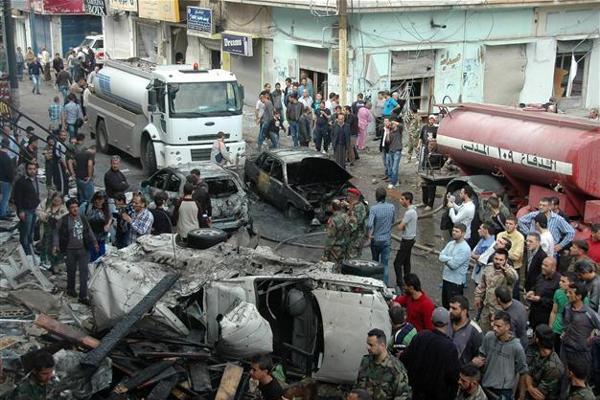Syria army launches assault on besieged Homs: state TV
DAMASCUS - Agence France-Presse


Security and emergency medical personnel work at the site of a car bomb explosion in al-Ushaq street in Ekremah neighboorhood in Syria?s central city of Homs on April 14, 2014. AFP Photo
Syria's army launched a major ground assault on the central city of Homs on Tuesday, state television said, with troops entering rebel-held districts under government siege for nearly two years."The Syrian army and the (pro-regime militia) National Defence Forces (NDF) have achieved key successes in the Old City of Homs," Syrian state television said, adding that troops were advancing in several besieged neighbourhoods in the area.
An activist on the ground and the Syrian Observatory for Human Rights NGO both confirmed the report.
"They have entered into one (besieged) area, Wadi al-Sayeh, which lies between Juret al-Shiyah and the Old City," said Abu Bilal, an activist trapped inside the blockade, who spoke to AFP via the Internet.
"This is the first time the regime has entered the besieged areas since it took Khaldiyeh" in summer 2013, he added.
Activist Abu Fehmi, also trapped in the siege, said the army was "bombing very, very intensely".
"They are bombing using all kinds of weapons," he told AFP via the Internet.
Britain-based Observatory director Rami Abdel Rahman said the army's entry into the besieged areas comes a day into a major escalation by the army.
"The military operation began yesterday after NDF forces were deployed to strengthen the regime troops' presence," Abdel Rahman told AFP.
"The army managed to take control of a handful of buildings," he said, adding that "they do not have military significance." Activists opposed to President Bashar al-Assad's regime have long referred to Homs, Syria's third city, as the "capital of the revolution" that broke out in March 2011.
The city initially saw some of Syria's biggest anti-regime protests, and was one of the first areas where the opposition became militarised, but most of it is now squarely under regime control.
Activists say that some 1,300 people remain inside the besieged rebel areas, the vast majority of them fighters, after a UN-supervised evacuation of civilians earlier this year.
The government siege has led to food and medical shortages, with people reporting surviving on little more than herbs for nearly two years.
